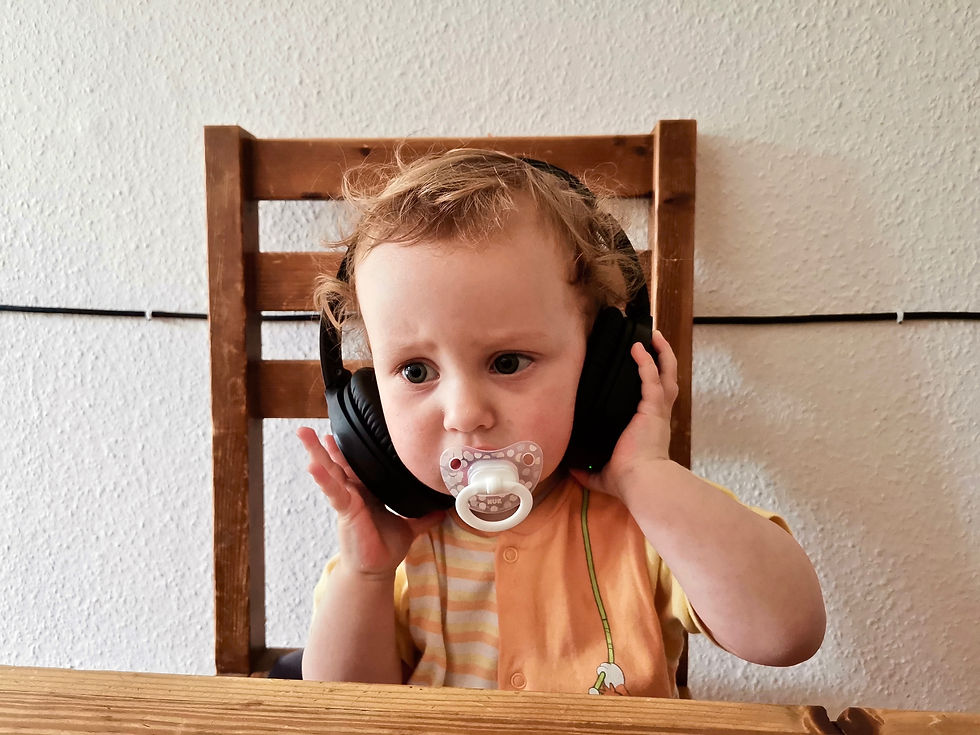Why Stubbornness Might Actually Be Your Child’s Superpower
- April Woodard
- Sep 25
- 3 min read

The Power Struggle
Your child has their arms crossed, chin out, and refuses to budge. You’ve asked them to put away the toy, try the new food, or finish their homework—and you’re met with pure, immovable resistance.
The world calls it stubborn. Teachers may call it defiant. You might even call it exhausting. But what if this very trait—the one that wears you out—turns out to be your child’s greatest strength?
What It Might Feel Like for Your Child
When your child digs in their heels, it’s not always about rebellion. For them, quitting feels wrong. Once they’ve set their mind on something, letting go feels like losing a piece of themselves.
I’ve seen this in my own life. The same determination that made me difficult as a kid is the drive that pushes me to finish books, show up for my family, and keep going when things are hard. For your child, that stubborn streak is the beginning of grit.
How God Wired the Brain
Here’s what’s happening inside:
Hyperfocus → Kids with ADHD and autism can lock onto something intensely. Walking away feels almost painful.
Reward pathways → Their brains crave the “win,” so giving up doesn’t feel like an option.
Persistence wiring → What looks like defiance is often determination turned up to full volume.
This wiring, when guided well, becomes resilience—the ability to keep going when others give up.
Holistic Contributors You Might Not See
Stubbornness can get stronger when:
Anxiety is present → resistance becomes a way of protecting themselves.
Transitions feel overwhelming → the refusal is about needing control.
Fatigue lowers flexibility → tired kids hold on tighter.
Understanding the “why” behind the stubborn moment helps you respond with wisdom instead of frustration.
Grace-Based Strategies That Work
1. Reframe the Word
Instead of labeling them as stubborn, try: “determined,” “persistent,” or “driven.” This shifts your perspective and theirs.
2. Choose Battles Wisely
Not every hill is worth dying on. Save your energy for the big issues and allow room for harmless choices.
3. Channel It
Give them challenges where determination pays off—puzzles, sports, music, coding, art. Stubbornness turns into perseverance when it has a worthy outlet.
4. Validate, Then Redirect
Say: “I see you don’t want to stop. That shows me how committed you are. Let’s set a timer and come back to it.” Acknowledgment lowers resistance.
5. Teach Flexibility as a Skill
Practice small moments of compromise: “Pick one toy to put away now, and one later.” Flexibility grows with gentle practice.
Scripture to Anchor You Both
God reminds us that persistence, when rooted in goodness, is powerful:
“Let us not grow weary in doing good, for at the proper time we will reap a harvest if we do not give up.” — Galatians 6:9
Your child’s refusal to give up is not a flaw—it’s a glimpse of how God created them to persevere.
Encouragement for the Journey
Yes, stubbornness is exhausting in the moment. But zoom out. This same trait that challenges you now can one day help your child:
Stand up for what’s right.
Push through hard seasons.
Refuse to quit on their calling.
With patience, guidance, and God’s grace, stubbornness becomes strength. It’s the seed of resilience—the kind that builds leaders, advocates, and world-changers.
So the next time your child digs in their heels, take a deep breath. Remember: you’re not raising a problem. You’re raising someone with a God-given persistence that, when matured, can move mountains.
✨ If this hit home for you, there’s so much more waiting inside my book, Beautifully Wired: The Hidden Gifts of Raising a Child with ADHD and Autism. It’s filled with science explained simply, faith-based encouragement, and practical strategies to help you understand your child—and yourself—on this journey. Go check it out today and keep building your parenting toolbox.










Comments